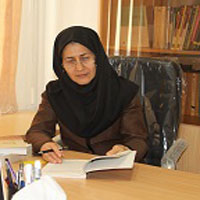The Economic Impact of Domestic Tourism Qom (Two Regional Input-Output Approach)
Author(s):
Article Type:
Research/Original Article (دارای رتبه معتبر)
Abstract:
Introduction
Development of tourism and its positive effects on economic growth, employment and poverty alleviation at national and regional levels, has always been highlighted by economic planners. Due to its cultural and religious attractions the city of Qom is considered as one of the most important pillars of tourism in Iran.The study of socio-economic development of Qom province shows that the main development axis of the province is pilgrimage and tourism. The tourism industry can play a significant role in the socio-economic and even political life of the city of Qom because of the lack of water, the weakness of natural resources and limitations of agricultural and industrial sectors. According to the 2015 report by Statistical Center of Iran (SCI 2015), with more than 3- million trips, Qom province ranked second of domestic tourists’ arrival among the twenty most important cities in the spring and summer of 2011. This paper measures the impact of domestic tourism expenditures on both output and employment in Qom province and the rest of the economy (the national economy excluding Qom province), using two-regional input-output approach.Materials and Methods
Three main data bases are used in this research: a) the 2011 national input-output table constructed by the Parliament Research Centre (2014); b) the 2011-2012 regional accounts for Qom and the rest of the economy (national economy exclude Qom province) provided by the Statistical Centre of Iran (SCI); c) domestic tourists expenditure and sectoral employment in Qom province and the national economy in the year 2012 provided by SCI (2014).A two-regional input-output model is used to study the impact of domestic tourism arrival to Qom region on the economy. For this purpose, two regional input-output coefficients of Qom and the rest of national economy are constructed through the intraregional and interregional coefficients using a non-survey-based AFLQ approach. These coefficients are used as a basis for estimating the output and the employment multipliers in order to evaluate the impact of domestic tourists’ arrival expenditures the region Qom on the output and employment of both region. For this purpose we consider domestic tourism’ expenditures as a type of Qom’s export to the rest of the economy. Such consideration impose to the two-region input-output model in order to calculate the impacts on output and employment.
General input-output model is defined in equation (1),
(1)
In which, , is a column vector of output, is the matrix of input coefficients, is vector of final demand, is Leontief inverse matrix. When general form is provided for two regions, equation (1), transformed to the more detailed form as follows: (2)
In equation (2), variable definitions are the same as in equation (1), and Q stand for Qom province and R for the rest of the economy. The effects on the output Qom and the Rest of the economy output and employment of any changes in the final demand of each region can be quantified using equation (3) and (4) below. In this case, suppose that there is an increase in the export component for the final demand in Qom province for the tourism sector, or , then the output for Qom and the rest of the economy region would increase as follows:
(3)
(4)
From equation (3), the increase in the output for Qom is calculated as: whereas, for the rest of the economy would be: . Using equation (4), Qom’s employment increases according to , and for the rest of the economy, the increase in the employment would be .
Discussion and Results: Estimations of the impact are made by using the two-region input-output model, equations (3) and (4). The results show that the wholesale, retail and repair of appliances sectors had the greatest output effect in both regions. The greatest job creation happen in the transportation, warehousing, and communications sectors in the both regions. Moreover, the results show that output of Qom province increases 5.16% as a result of domestic tourism in Qom in 2011 and Qom employment would also increase 8.08 %.
The result also shows that the output of national economy increases by 7532 billion rials and 26163 jobs are created.
Conclusion
In planning for each area, their specific capabilities, potentials, constraints, and needs must be considered. We recommended that policymakers and economic planners focus on the capabilities, opportunities and characteristics of different regions and move towards regional planning instead of applying macroeconomic planning. Then regional policy makers leads to focus on the Qom province high potential of attracting domestic and foreign tourists. The results of this research can help them to estimate impacts of the development tourismKeywords:
Language:
Persian
Published:
Journal of Tourism Planning and Development, Volume:7 Issue: 25, 2018
Pages:
8 to 24
magiran.com/p1899403
دانلود و مطالعه متن این مقاله با یکی از روشهای زیر امکان پذیر است:
اشتراک شخصی
با عضویت و پرداخت آنلاین حق اشتراک یکساله به مبلغ 1,390,000ريال میتوانید 70 عنوان مطلب دانلود کنید!
اشتراک سازمانی
به کتابخانه دانشگاه یا محل کار خود پیشنهاد کنید تا اشتراک سازمانی این پایگاه را برای دسترسی نامحدود همه کاربران به متن مطالب تهیه نمایند!
توجه!
- حق عضویت دریافتی صرف حمایت از نشریات عضو و نگهداری، تکمیل و توسعه مگیران میشود.
- پرداخت حق اشتراک و دانلود مقالات اجازه بازنشر آن در سایر رسانههای چاپی و دیجیتال را به کاربر نمیدهد.
In order to view content subscription is required
Personal subscription
Subscribe magiran.com for 70 € euros via PayPal and download 70 articles during a year.
Organization subscription
Please contact us to subscribe your university or library for unlimited access!



